Resources
About Us
Manufacturing Crisis Management Market Size, Share, Forecast, & Trends Analysis by Solution (Risk & Business Continuity Management, Cybersecurity Crisis Management, Cloud-based Crisis Management Platforms), Services, End-user (Large Enterprises, SMEs), Industry Vertical (Aerospace and Defense, Automotive) - Global Forecast to 2032
Report ID: MRSE - 1041454 Pages: 200 Mar-2025 Formats*: PDF Category: Semiconductor and Electronics Delivery: 24 to 72 Hours Download Free Sample ReportThe global Manufacturing Crisis Management Market is experiencing significant growth, fueled by the growing demand for effective risk management and crisis response solutions across industries. As more and more disruptions in global supply chains caused by natural disasters, geopolitical conflicts, and pandemics occur, manufacturers are making crisis preparedness and resilience a top priority. As the complexity and frequency of these disruptions rise, organizations are turning to advanced crisis management solutions to mitigate risks and ensure business continuity.
The major growth impetus for the Manufacturing Crisis Management Market is the rising occurrence of supply chain breakdowns, emphasizing the necessity to deploy sophisticated solutions that can support the resilience and continuity of the manufacturing process. Natural disasters, political unrest, and pandemics have shown the inadequacies of conventional crisis management techniques and forced manufacturers to become more pro-active and tech-based in adopting new approaches. Additionally, the use of AI, big data analytics, and IoT is revolutionizing crisis management through the provision of real-time tracking, predictive analytics, and accelerated response times. For example, predictive analytics using AI enables firms to predict possible disruptions, which creates a huge competitive edge in both preparing for and countering crises before they intensify. Furthermore, the convergence of cloud-based platforms provides flexible, affordable solutions that enable manufacturers to react rapidly to crises from almost anywhere in the world, thus improving business continuity.
Despite the opportunities for growth, a few challenges remain, including the substantial up-front cost of installing sophisticated crisis management solutions. Small businesses, especially SMEs, might not be able to afford the costs of deploying such solutions. Additionally, the reluctance to adopt new technology and change well-established manufacturing techniques continues to impede market entry in some geographical markets and industrial sectors. Further, concerns with data privacy and security around protection of sensitive corporate data in the cloud may serve as a constraining factor to adoption, especially in industries having stringent regulatory policies, like drugs and defense.
The Manufacturing Crisis Management Market is segmented based on the solution types, service types, end users, industry verticals, and geography. The solutions/product segments are further divided into Risk & Business Continuity Management, Supply Chain Resilience & Crisis Response Solutions, Predictive Analytics, and Cybersecurity Crisis Management. These solutions play a key role in tackling the immediate and long-term issues that emerge in a crisis. Risk & Business Continuity Management continues to be the dominant segment, with businesses more and more aware of preparing for crisis in advance. The adoption of predictive analytics and crisis forecasting tools is increasing significantly as they enable manufacturers to anticipate disturbances and adopt approaches to reduce their effects.
The service segment includes Consulting & Strategic Planning, Implementation & Integration, and Training & Simulation Services, all of which are crucial in ensuring that crisis management solutions are effectively deployed, integrated, and supported. While the consulting services segment held the largest share of the services market, Training & Simulation Services segment is experiencing significant growth as manufacturers attempt to condition their staff for actual crisis situations.
From the end-user perspective, large enterprises are at the forefront of adopting crisis management solutions because of their greater, more complicated operations and the need to preserve business continuity. Yet, small and medium-sized enterprises (SMEs) are increasingly adopting these solutions as they realize the value of business resilience in an environment of intense change across the globe. The public sector and government also have a major role to play, with numerous government agencies investing in crisis readiness to deal with national-level disruptions.
Based on industry vertical, the Aerospace and Defense sector is expected to hold the largest share of the overall Manufacturing Crisis Management Market, led by its stringent safety standards, regulatory needs, and the mission-critical nature of its operations. The need for strong crisis management solutions in this sector is critical to maintaining continuity, safety, and compliance during crises. Conversely, the Energy and Utilities segment is expected to exhibit the fastest growth during the forecast period, mainly due to the increasing demand to enhance crisis preparedness, fortify cybersecurity defenses, and maintain operations when faced with environmental disasters and natural calamities, thereby making crisis management solutions crucial for upholding vital infrastructure and services.
Geographically, North America estimated to account for the largest share of the global manufacturing crisis management market, mainly due to the presence of leading technology providers like Siemens AG, IBM Corporation, and Honeywell International, and also due to government support for crisis management efforts. Europe is the next in line, with countries like Germany, France, and the U.K. emphasizing regulatory policies and crisis readiness in various sectors such as automotive, pharmaceuticals, and aerospace among others. The Asia-Pacific region will record the highest growth in the forecast period, driven mainly due to the rapid industrialization of China, India, and South Korea, as well as an increasing need for technology that can help resolve the peculiar crisis management issues in emerging markets.
The overall Manufacturing Crisis Management Market is characterized by the presence of a mix of multinational technology players and niche solution providers. Dominant players like Siemens AG, SAP SE, Honeywell International, Microsoft Corporation, and IBM are concentrating on enhancing their crisis management offerings by combining next-generation technologies, such as AI, IoT, and blockchain. These firms are also vying for strategic collaborations, mergers and acquisitions, and product development to solidify their market presence and deliver converged solutions addressing the changing needs of manufacturing companies.
The report includes a competitive landscape based on an extensive assessment of the key strategic developments that led market participants to adopt over the past three years (2022-2025).
The key players profiled in the global Manufacturing Crisis Management Market report are Siemens AG, SAP SE, IBM Corporation, Honeywell International Inc., Schneider Electric, Cisco Systems, Inc., Microsoft Corporation, Rockwell Automation, Oracle Corporation, and Deloitte Touche Tohmatsu Limited.
|
Particulars |
Details |
|
Number of Pages |
243 |
|
Format |
|
|
Forecast Period |
2025–2032 |
|
Base Year |
2024 |
|
CAGR |
8.9% |
|
Market Size in 2025 |
USD 17.01 billion |
|
Market Size in 2032 |
USD 30.8 billion |
|
Segments Covered |
|
|
Countries Covered |
North America (U.S., Canada), Europe (Germany, U.K., Spain, Italy, France, Netherlands, and Rest of Europe), Asia-Pacific (China, India, Japan, , South Korea, Australia, and Rest of Asia-Pacific), Latin America (Brazil, Mexico, Argentina, and Rest of Latin America), and the Middle East & Africa (Saudi Arabia, South Africa, UAE, and Rest of Middle East & Africa) |
|
Key Companies |
Siemens AG, SAP SE, IBM Corporation, Honeywell International Inc., Schneider Electric, Cisco Systems, Inc., Microsoft Corporation, Rockwell Automation, Oracle Corporation, and Deloitte Touche Tohmatsu Limited |
The global Manufacturing Crisis Management Market size was valued at $17.01 billion in 2025.
The market is projected to grow from $17.01 billion in 2025 to $30.8 billion by 2032.
The Manufacturing Crisis Management Market analysis indicates significant growth, reaching $30.8 million by 2032, at a compound annual growth rate (CAGR) of 8.9% from 2025 to 2032.
The key companies operating in this market include Siemens AG, SAP SE, IBM Corporation, Honeywell International Inc., Schneider Electric, Cisco Systems, Inc., Microsoft Corporation, Rockwell Automation, Oracle Corporation, and Deloitte Touche Tohmatsu Limited
Prominent market trends in the manufacturing crisis management market are growing adoption of AI, IoT, and Big Data Analytics; cloud-based crisis management solutions; and the rise of predictive analytics in crisis management
By product/solution, Risk & Business Continuity Management continues to be the dominant segment.; by service type, the consulting services segment is expected to dominate the market; by end user, large enterprises segment is forecasted to dominate the market.; and by industry vertical, the aerospace and defense segment is expected to dominate the market
By region, North America estimated to account for the largest share of the global manufacturing crisis management market. Whereas the Asia-Pacific region will record the highest growth in the forecast period, driven mainly due to the rapid industrialization of China, India, and South Korea.
The primary drivers of Manufacturing Crisis Management Market growth include increasing frequency of supply chain disruptions, technological advancements in crisis management, and government and regulatory support for crisis preparedness.






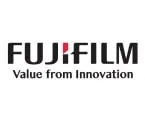

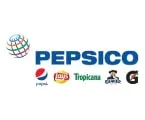
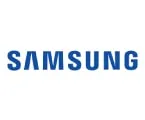





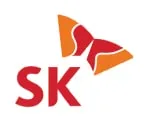
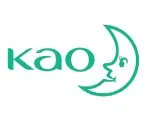

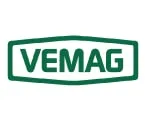





Published Date: May-2024
Please enter your corporate email id here to view sample report.
Subscribe to get the latest industry updates